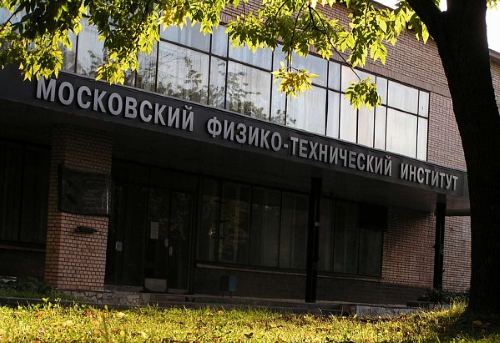
Physics powerhouse: the main building of the Moscow Institute of Physics and Technology. (Courtesy: Andrey Gusev)
By Susan Curtis in Moscow
It takes less than four hours to fly to Moscow from London, but it feels much more distant and mysterious. Even my colleagues at Physics World, who pride themselves on covering all of physics in all parts of the world, admit to a bit of a blind spot when it comes to Russian science, even though Russia has a strong tradition in physics as well as in mathematics and space science.
I’m here in Moscow to help fill in some of the gaps. At the invitation of the Moscow Institute of Physics and Technology (MIPT), over the next few days I’ll be visiting some of Russia’s leading physics facilities along with a handful of journalists from magazines and newspapers across Europe. On the agenda will be the Joint Institute Nuclear Research in Dubna, famous for its discovery of three of the four new elements in the periodic table, as well as the Space Research Institute in Moscow and the MIPT itself.
I’m curious to see whether the picture of Russian science that’s emerged from my background reading is a faithful rendition of the real thing. According to recent reports, some tens of thousands of Russian scientists now work overseas, a result of the dramatic decline in science funding that followed the collapse of the Soviet Union in the 1990s. That scientific exodus continues today, due in part to the political bully-boy tactics of President Vladimir Putin, while the political climate has also heightened the sense of isolation felt by the scientists who remain. As a result, Russian scientific output has flatlined since 1996, falling well behind the world’s scientific powerhouses such as the US, China and even the UK.
Today we’ll be meeting Russia’s deputy minister of education and science to find out how the Russian government plans to make Russia a more attractive place for scientists to pursue their research. But a true picture of physics in Russia will only emerge from talking to the scientists themselves – and that’s exactly what I hope to do during this short trip.
“Dubna, famous for its discovery of three of the four new elements in the periodic table”. It is outrageously (mysteriously!) wrong as Dubna lab. officially discovered in what one calls “warm fusion reaction” using the Ca-48-based beam on the different actinides the five Super Heavy Elements (SHE’s) with nuclear charge values Z= 114, 115, 116, 117 and 118. Moreover, they claim also the discovery of the Z = 113 element, but it was finally attributed to Japan for their “cold fusion” work on this element.
Trackback: Blog - physicsworld.com